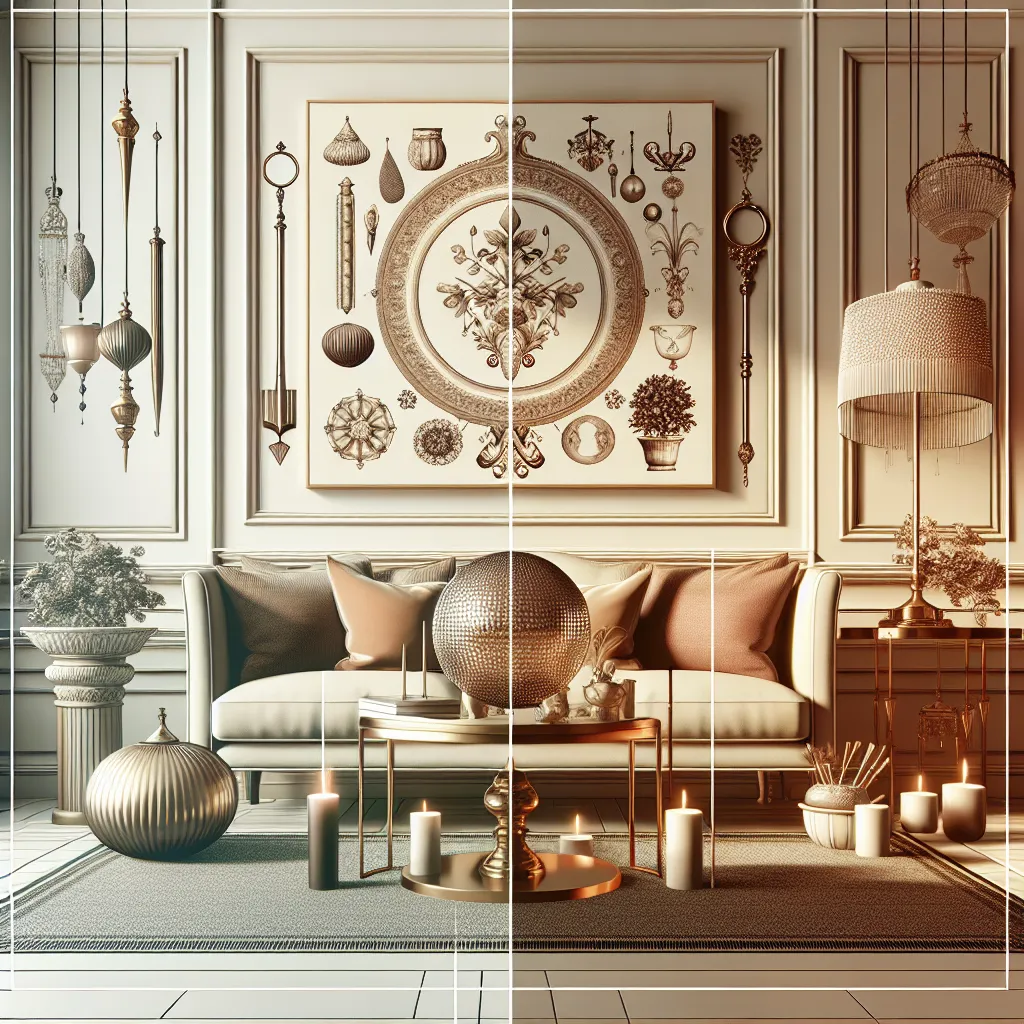The Evolution of Ornamental Styles in Interior Design
Interior design trends are constantly evolving, and one of the key elements that contribute to these changes is the use of ornaments. Over the years, the evolution of ornamental styles in interior design has reflected shifts in cultural preferences, design movements, and technological advancements.
In the past, ornamental styles in interior design were heavily influenced by historical periods such as the Renaissance, Baroque, and Rococo, where opulent and intricate ornamentation dominated the spaces. However, as the industrial revolution brought about a shift towards modernism, the ornamental styles in interior design also underwent a transformation. Clean lines, minimalism, and a focus on functionality became prominent, leading to a departure from the excessive ornamentation of the past.
In the contemporary interior design landscape, the evolution of ornamental styles has led to a harmonious blend of the old and the new. While minimalist and Scandinavian design principles continue to be popular, there is also a resurgence of interest in incorporating ornamental elements inspired by diverse cultural traditions. From intricate geometric patterns to nature-inspired motifs, the ornamental styles in interior design today reflect a more eclectic and inclusive approach.
Furthermore, technological advancements have enabled designers to explore innovative ways of incorporating ornaments into interior spaces. 3D printing, laser cutting, and digital design tools have expanded the possibilities for creating bespoke ornamental elements that can add a unique touch to interior spaces.
As we look to the future, the evolution of ornamental styles in interior design is likely to continue, influenced by changing societal values, technological innovations, and a desire to create spaces that are both visually striking and deeply meaningful.
Utilizing Ornaments to Enhance Interior Spaces
Utilizing ornaments is an essential aspect of enhancing interior spaces and staying updated with the latest interior design trends. Ornaments play a crucial role in adding personality, charm, and visual interest to any space, whether it’s a home, office, or commercial setting. The strategic placement of ornaments can transform a mundane room into a captivating and inviting space. Interior designers and homeowners are increasingly recognizing the impact of ornaments on the overall aesthetics of a space and are integrating them into their design schemes.
When it comes to interior design, ornaments encompass a wide range of decorative elements such as sculptures, vases, figurines, wall art, and other decorative objects. These ornaments can be used to create focal points, add texture, introduce color, and reflect the theme or style of the space. Incorporating ornaments that align with the overall design concept can elevate the visual appeal and create a cohesive and harmonious environment. Moreover, ornaments can serve as conversation starters and reflect the personal taste and preferences of the occupants.
Furthermore, ornaments can be utilized to highlight the architectural features of a space, draw attention to specific areas, and complement the existing furniture and accessories. Whether it’s a minimalist, industrial, vintage, or eclectic style, there are ornaments available to suit every design theme. The versatility of ornaments allows for experimentation and creativity, enabling individuals to express their unique style and create a space that is visually captivating and reflective of their personality.
In conclusion, the utilization of ornaments is a powerful tool in interior design, enabling individuals to enhance their living and working spaces with style and sophistication. As interior design trends continue to evolve, the incorporation of carefully selected ornaments will remain integral to achieving aesthetically pleasing and purposeful interiors.
Cultural Influences on Ornamental Trends in Interior Design
When it comes to interior design, ornaments play a crucial role in reflecting cultural influences and shaping design trends. Whether it’s the intricate patterns of Moroccan tiles, the delicate Chinese motifs, or the vibrant colors of Mexican textiles, cultural influences on ornaments in interior design are undeniable.
One of the key aspects of cultural influences on ornamental trends in interior design is the way in which different cultures utilize symbols and patterns to convey their unique stories and traditions. For example, in Middle Eastern cultures, the use of ornate geometric patterns and arabesque designs have been a staple of interior ornamentation for centuries, reflecting the region’s rich history and artistic heritage.
Furthermore, the resurgence of interest in global travel and cross-cultural exchange has significantly impacted interior design trends, leading to an increased appreciation for diverse ornamental styles. Designers and homeowners alike are drawn to the authenticity and storytelling that cultural ornaments bring to a space, whether it’s through hand-painted ceramics from Portugal or the earthy tones and textures of African tribal prints.
In today’s interconnected world, the fusion of cultural influences has given rise to eclectic interior design styles that seamlessly blend ornaments from different parts of the world. This cross-pollination of design ideas has resulted in spaces that are not only visually captivating but also serve as a testament to the power of cultural diversity in shaping contemporary interiors.
In conclusion, the influence of ornaments on interior design trends is intricately intertwined with cultural influences. By embracing the richness and diversity of cultural ornaments, interior design continues to evolve, creating spaces that celebrate the beauty of global heritage and traditions.
Modern Interpretations of Traditional Ornaments in Interior Design
When it comes to interior design trends, the influence of ornaments cannot be overstated. Ornamental motifs have a rich history, often drawing from cultural traditions and heritage. In modern interior design, there is a fascinating trend emerging – the modern interpretation of traditional ornaments. This trend involves the reimagining of classic ornamental elements in a contemporary context, creating spaces that are both rooted in history and yet strikingly modern.
One way in which modern interpretations of traditional ornaments are making their mark on interior design is through the use of updated color palettes and sleeker, more minimalist interpretations of classic motifs. This approach allows for the integration of traditional patterns and designs in a way that feels fresh and relevant to today’s aesthetics. For example, traditional floral patterns may be reinterpreted in a more abstract, geometric form, and then paired with clean, modern furniture to create a space that feels both timeless and on-trend.
Furthermore, the modern interpretation of traditional ornaments often involves experimenting with scale and proportion. Oversized traditional motifs can make a bold statement in a room, serving as a focal point that captures the eye and creates a sense of drama. Conversely, miniature reinterpretations of classic patterns can add delicate, intricate detailing to a space, providing visual interest and a sense of intimacy.
In addition, the use of traditional ornaments in unexpected contexts is a hallmark of the modern reinterpretation trend. Incorporating ornamental elements in non-traditional ways, such as applying intricate designs to sleek, contemporary surfaces or juxtaposing them with industrial materials, creates a visually compelling tension that adds depth and character to interior spaces.
As interior design continues to evolve, the modern reinterpretation of traditional ornaments serves as a testament to the enduring allure of classic motifs. By infusing spaces with a sense of history while simultaneously pushing the boundaries of contemporary design, this trend offers a captivating glimpse into the dynamic relationship between the past and the present in interior design.

